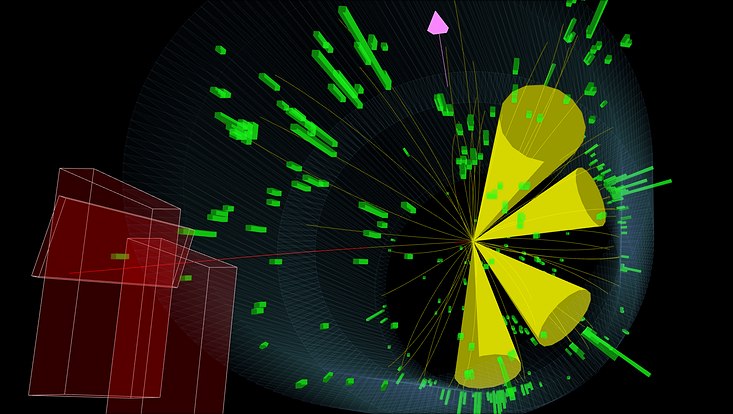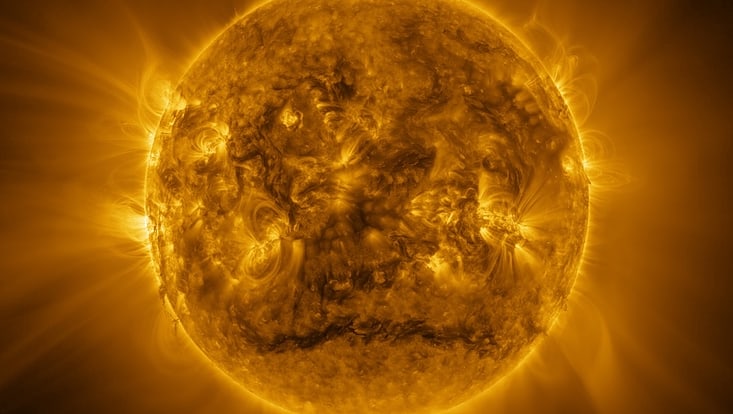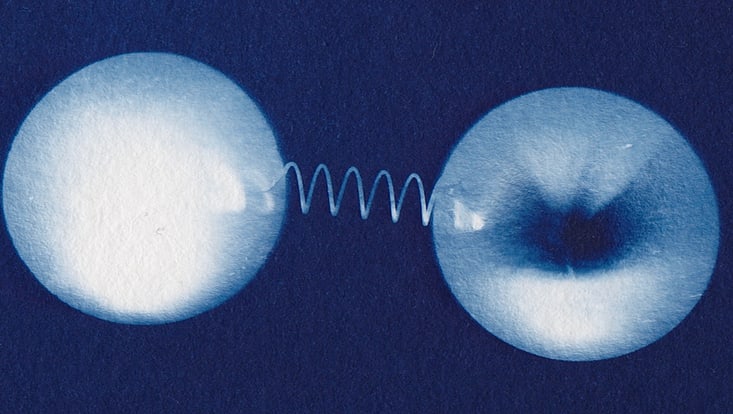New approach successfully appliedTop quark mass measured with unparalleled precision
14 April 2022

Photo: CMS Collaboration
Particle physicists from the cluster of excellence Quantum Universe at Universität Hamburg have achieved a milestone in the determination of the top quark mass. The analysis is based on data taken by the Compact Muon Solenoid Detector (CMS) at the Large Hadron Collider (LHC) and applies new methods and improved procedures to consistently treat uncertainties in the measurement. The latest result, a measurement of the top quark mass of 171.77 ± 0.38 GeV, estimates the value of the top quark mass with a precision of about 0.22%.
The precise knowledge of the top quark mass is of paramount importance to understand our world at the smallest scale. Knowing this heaviest elementary particle as intimately as possible is crucial because it allows testing of the internal consistency of the mathematical description of all elementary particles, called the Standard Model.
Knowing the W boson and Higgs boson mass accurately, the top quark mass can be predicted by the Standard Model, and consequently, also the W boson mass using the top quark mass and Higgs boson mass. Interestingly, the theoretical physics definition of mass, which has to do with the effect of quantum corrections, is still tough to quantify for the top quark.
And remarkably the very stability of our universe depends on the exact values of the Higgs boson and top quark masses. We only know that the universe is very close to a metastable state with the present precision. If the top quark mass is even slightly different, the universe would be less stable in the long term, potentially eventually disappearing in a violent event similar to the Big Bang.
The top quarks created in collisions at the Large Hadron Collider (LHC) at CERN were measured using five different kinematic variables sensitive to the top quark mass instead of only up to three used in previous measurements. While this might sound like merely a technical improvement, it makes the analysis of the data significantly more complicated. Including this extra information improves the precision of this new measurement in a novel and unconventional way.
Furthermore, extremely precise calibration of the CMS data and an in-depth understanding of the remaining experimental and theoretical uncertainties and their interdependencies were necessary. The uncertainties on how accurately the CMS detector has determined the properties of particles from the produced top quarks were in this innovative method for extracting the top quark mass. The uncertainties coming from the limitations of theoretical descriptions of the production of top quarks were also understood in much more detail. Another big step is expected when the new approach is applied to the more extensive dataset recorded in 2017 and 2018.
The CMS Detector is one of four experiments at the particle accelerator Large Hadron Collider at the Centre for particle physics CERN in Geneva. The CMS experiment is run by a collaboration of scientists from all over the world to better understand the smallest building blocks of matter.


